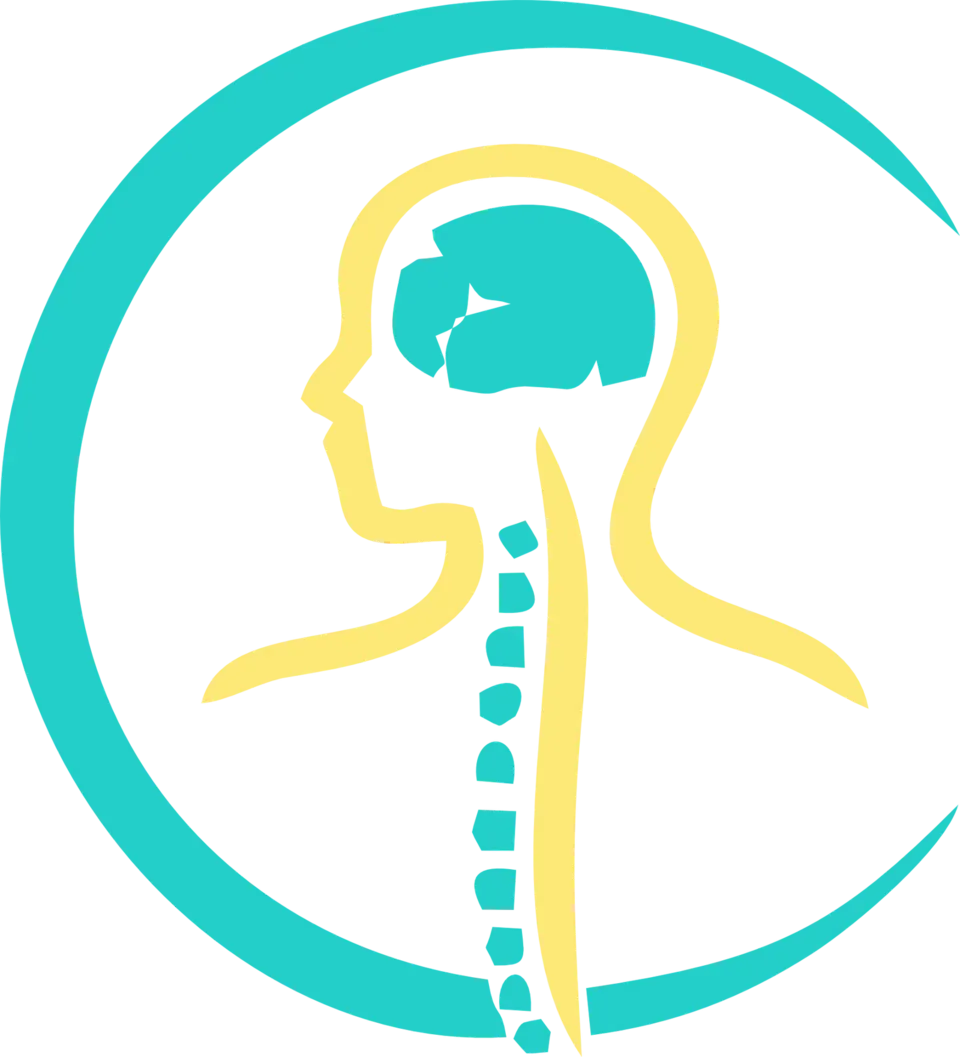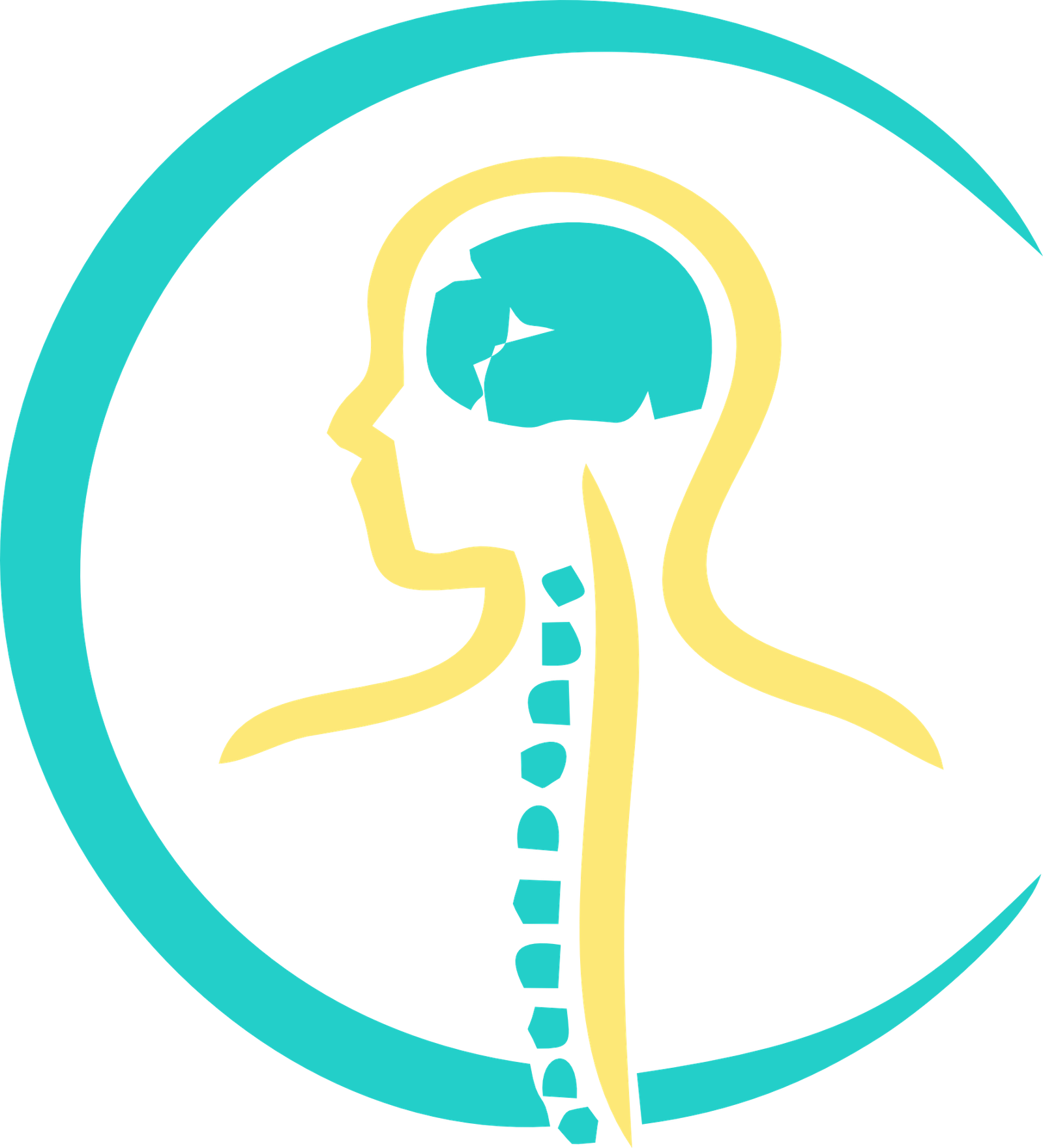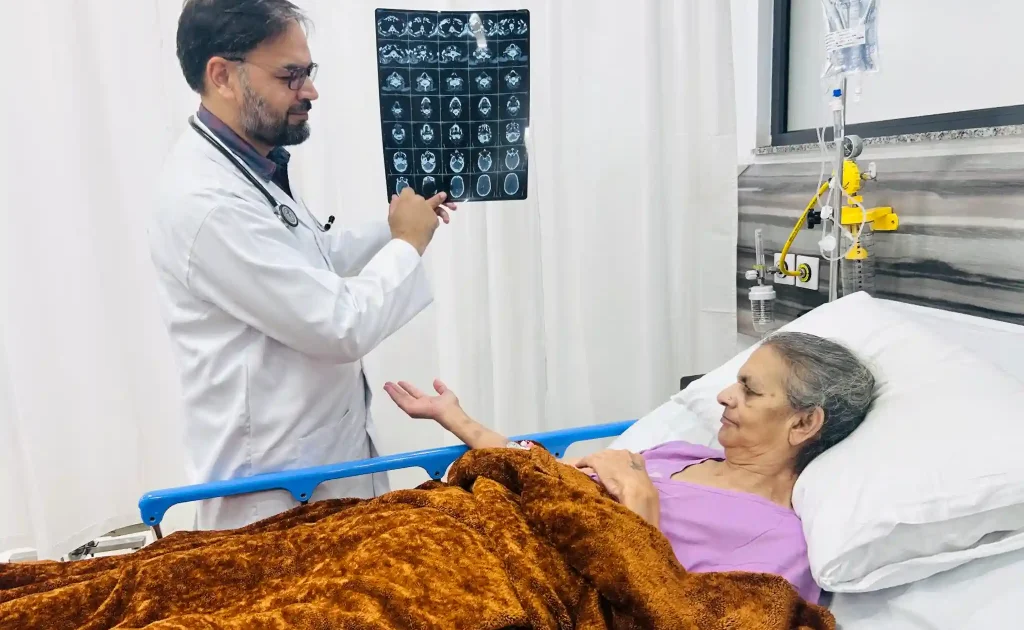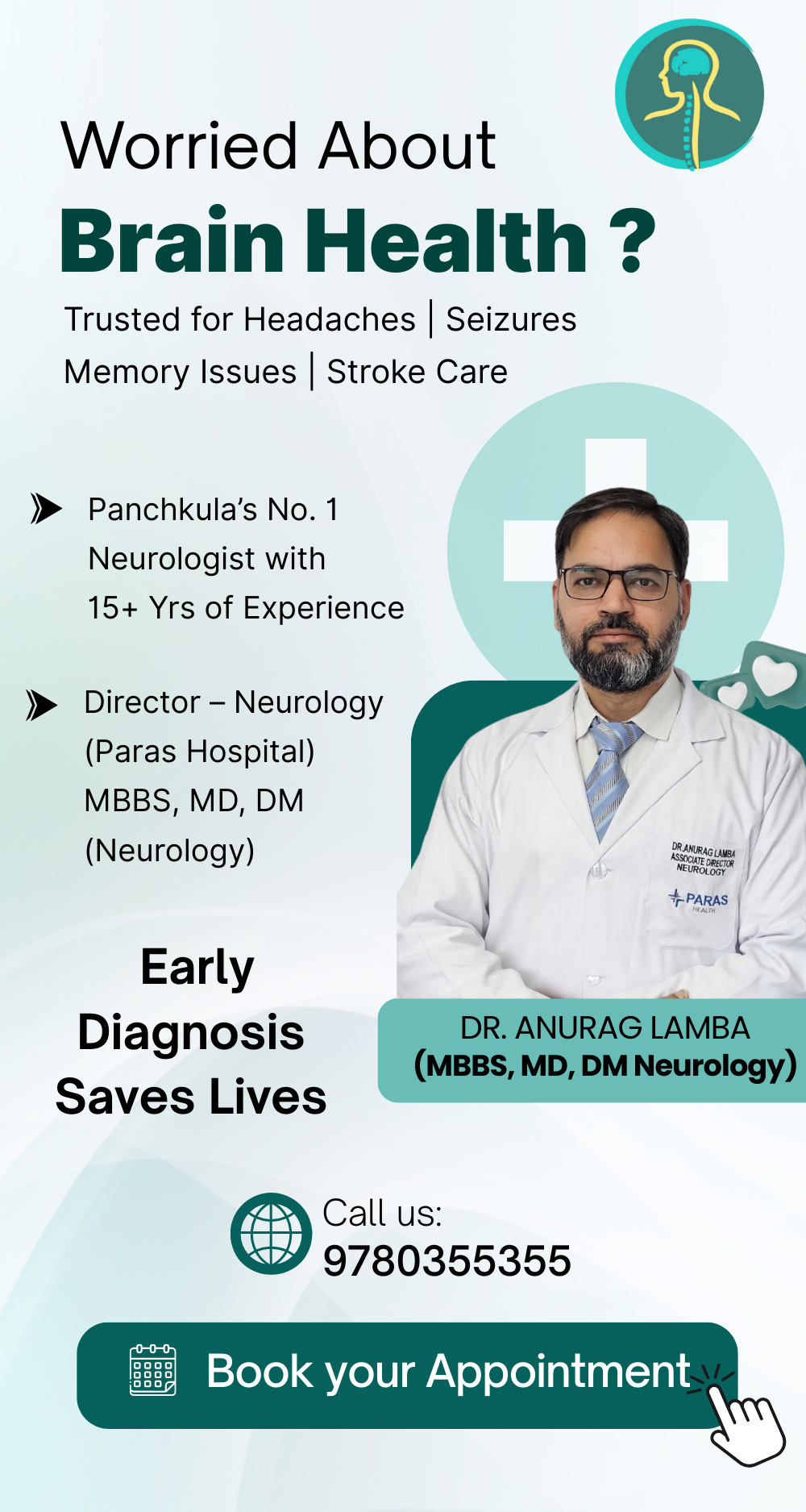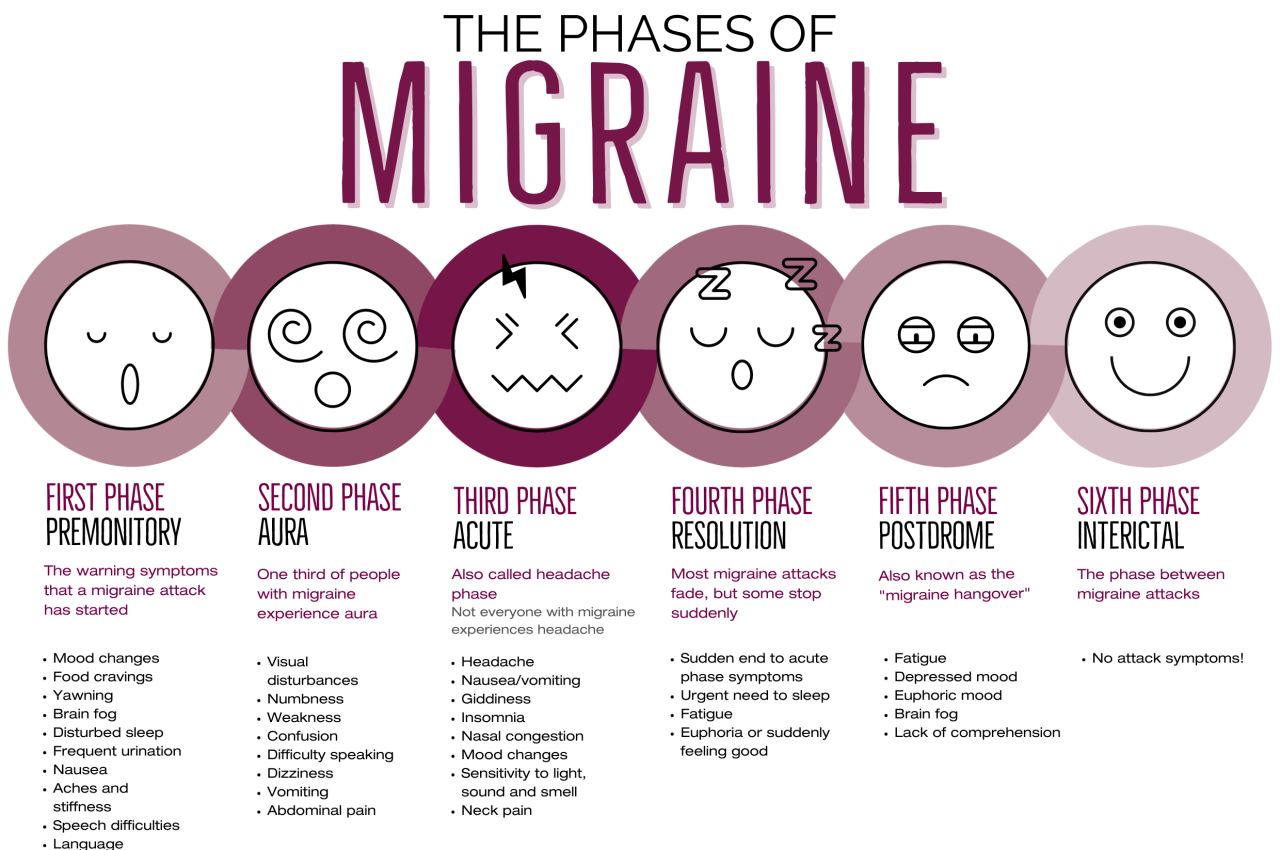If your headaches are showing up more often than some relatives, it might be time to stop brushing them off as “just stress” or “gas pain.” Especially if you’re in Panchkula and feel like the paracetamol bottle is your new best friend—this article is your wake-up call.
Headaches are common. Migraines? Not as much. But a surprising number of people suffering from regular, intense headaches don’t realize they’re dealing with migraines.
Let’s untangle the confusion—and show you how to take the right steps toward relief.
Not Every Headache Is “Just a Headache”
Many people in Panchkula walk around with undiagnosed migraines for months—sometimes years. Why? Because migraines don’t always look like the stereotypical pounding, one-sided head pain.
Some show up as:
- Nausea and light sensitivity with mild head pain
- Vision disturbances without any pain at all
- A sudden need to lie down because of dizziness or overwhelming fatigue
We once saw a 34-year-old marketing executive who came to Neuro Clinic, Panchkula complaining of “weird neck pressure and forehead fog.” She thought it was due to long hours at her laptop. Turns out, she had cervicogenic migraine triggered by posture and hormonal cycles. With posture correction, lifestyle tweaks, and medication—her symptoms dropped by 80% in three weeks.
What Really Causes Migraine?
Migraines are a complex neurovascular condition. That means they involve both your brain and blood vessels—plus triggers from your environment, hormones, sleep, and stress.
Some of the most common triggers we see among patients in Panchkula and Zirakpur include:
- Skipped meals or dehydration
- Inconsistent sleep cycles
- Prolonged screen time
- Strong perfumes or incense
- Bright sunlight or sudden weather changes
- Hormonal changes in women
Understanding your personal triggers is half the treatment. And no—Google can’t figure this out for you alone.
Signs You Might Be Dealing With Migraine (Not Just Headache)
If you’re nodding to even 3–4 of these, it’s time to see a neurologist:
- Headache that lasts 4 to 72 hours
- Pulsating or throbbing pain, often on one side
- Nausea, vomiting, or dizziness
- Sensitivity to light, sound, or smells
- Visual changes—flashing lights, zig-zags, blind spots
- “Warning signs” before a headache (like food cravings or yawning)
- Feeling drained or foggy after the pain goes away
We had a 22-year-old college student who thought she was just “overthinking too much” before her exams. After fainting twice and waking up disoriented, she was finally diagnosed with migraine with aura—a neurological warning sign before the pain. With medication and therapy, she’s back to preparing for her CAT exams without fear.
Why Self-Medication Is Risky (Especially in Headaches)
Here’s the problem with taking painkillers too frequently—your brain begins to expect them, and stopping them can cause “rebound headaches.” This makes the original issue worse.
Another Panchkula resident, Mr. Gupta, came in with daily head pain that wouldn’t quit despite taking tablets almost every night. Turns out, he had built up medication overuse headache, layered on top of his original migraine condition.
That’s why diagnosis by a neurologist—not a chemist—is crucial.
Role of a Neurologist in Managing Migraine
At Dr. Anurag Lamba’s Neuro Clinic in Panchkula, the first step is identifying your migraine subtype and finding personalized treatment options.
This usually includes:
- Trigger mapping and food/sleep analysis
- Tailored medication (not one-size-fits-all)
- Non-drug treatments like magnesium supplements or posture therapy
- Preventive plans for chronic migraine
- Emergency plans for attack days
- Lifestyle and menstrual tracking (especially for women)
We also use modern tools like neuroimaging if symptoms don’t follow classic patterns—just to rule out more serious issues like brain lesions, sinus problems, or even rare nerve conditions.
When Should You See a Doctor?
Not every headache needs a specialist. But see a neurologist if you experience:
- 3+ headaches a month that interfere with your daily life
- Headaches with vision, speech, or limb changes
- Confusion, blackouts, or fainting
- Change in headache pattern or intensity
- Family history of neurological disorders
Remember, it’s not “too early” to get checked. It’s smarter to act before things get worse.
📍 Book a Consultation Now with Dr. Anurag Lamba
What Makes Dr. Lamba the Right Choice for Migraine Patients in Panchkula?
Dr. Lamba doesn’t just hand out prescriptions. He listens. His patients describe the consultations as conversations—not rushed checklists.
In fact, the Migraine & Headache Care Program at Neuro Clinic is designed to decode your lifestyle, habits, and symptoms before crafting a plan.
What you can expect:
- A 360° view of your symptoms, not just the pain
- Respectful discussions (no gaslighting or eye-rolling)
- Follow-ups and WhatsApp support for flare-up days
- Medication that evolves with your progress—not fixed for life
3 Helpful Articles to Understand Migraine Better
Here are external expert-backed resources you can explore alongside your consult:
- American Migraine Foundation – Deep dive into migraine types and myths
- NHS Migraine Management Guide – UK guidelines on when to seek help
- Cleveland Clinic Migraine Overview – Easy explanations and FAQs
They offer extra context, but nothing replaces a local, personalized consult.
Final Word: Don’t Wait It Out
Migraines are not just “bad headaches.” They’re a neurological condition. The longer they go untreated, the harder they are to control.
If your head is becoming a constant source of pain, trust your instincts. Help is closer than you think—right here in Panchkula.
